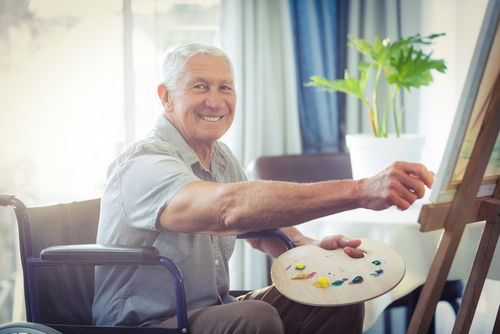Activities are the things that we do, including getting dressed, doing chores and even paying bills. They can represent who we are and what we’re about. For the person with Alzheimer’s, activities can mean the difference between feeling loved and needed and unloved and unnecessary.
When planning activities and daily tasks to help the person with Alzheimer’s organize the day, think about:
- What skills and abilities does the person have?
- What does the person enjoy doing?
- Does the person begin activities without direction?
- Does the person have physical problems?
Your Approach
- Make the activities part of your daily routine.
- Focus on enjoyment, not achievement.
- Determine what time of day is best for the activity.
- Offer support and supervision.
- Be flexible and patient, and stress involvement.
- Help the person remain as independent as possible.
- Simplify instructions.
- Establish a familiar routine.
The Environment
- Make activities safe.
- Change your surroundings to encourage activities.
- Minimize distractions that can frighten or confuse the person.
Structuring the Day
When structuring the day, consider the following activities:
Morning Activities for Alzheimer’s Patients
- Wash up, brush teeth and get dressed.
- Prepare and eat breakfast.
- Discuss the newspaper or reminisce about old photos.
Afternoon Activities for Alzheimer’s Patients
- Prepare and eat lunch, read mail and clear and wash dishes.
- Listen to music or do a crossword puzzle.
- Take a walk.
Evening Activities for Alzheimer’s Patients
- Prepare and eat dinner.
- Play cards or watch a movie.
- Read a book or magazine.
If you need ideas for activities to do with your loved one, check out our List of Therapeutic Activities for Seniors with Alzheimer’s and Dementia.
How Can Music, Art and Other Therapies Help Alzheimer’s?
Music, art, pet and other types of therapies can help enrich the lives of people with Alzheimer’s disease. Pets, for instance, have been shown to reduce depression and boost self-esteem. Art provides an outlet for expression. Music stirs memories, emotions, and when accompanied by singing, encourages group activity. Create guidelines for all activities in order to ensure their effectiveness.
Music Therapy Guidelines
- Identify music that’s familiar and enjoyable to the listeners.
- Use live music, tapes or CDs; radio programs, interrupted by too many commercials, can cause confusion.
- Use music to create the mood you want.
- Link music with other reminiscence activities; use questions or photographs to help stir memories.
- Encourage movement (clapping, dancing) to add to the enjoyment.
- Avoid sensory overload; eliminate competing noises by shutting windows and doors and by turning off the television.
Learn more by reading Why Music Therapy Is Successful for Seniors.


Art Therapy Guidelines
- Keep the project on an adult level. Avoid using crayons or anything else that might be demeaning or seem childlike. Use safe materials & avoid toxic substances
- Build conversation into the project. Provide encouragement, discuss what the person is creating and try to initiate a bit of creative storytelling or reminiscence.
- Help the person begin the activity. If the person is painting, you may need to start the brush movement.
- Allow plenty of time to complete the art project.
Pet Therapy Guidelines
- Studies have shown Alzheimer’s patients have fewer anxious outbursts if there is an animal in the home.
- Not everyone will react positively to animals. Those who owned pets previously tend to be more responsive.

